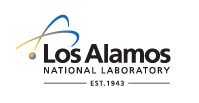LANL News: Four Corners Methane Hotspot Points to Coal-Related Sources
Los Alamos National Laboratory sent this bulletin at 10/14/2014 08:03 AM MDT
News Release
Nancy Ambrosiano, 505.667.0471, nwa@lanl.gov
PHOTO ATTACHED
Four Corners Methane Hotspot Points to Coal-Related Sources
Methane measured at 3-times higher levels than previously reported
LOS ALAMOS, N.M., October 14, 2014—A large, persistent methane hot spot has existed over the Four Corners area of the US Southwest for almost a decade, confirmed by remote regional-scale ground measurements of the gas.
“A detailed analysis indicates that methane emissions in the region are actually three times larger than reported by EPA. Our analysis demonstrates that current EPA inventories are missing huge methane sources in the region,” said Manvendra Dubey, a Los Alamos National Laboratory scientist on the project. “We attribute this hot spot to fugitive leaks from coal-bed methane that actually preceded recent concerns about potential emissions from fracking,” Dubey said.
A team of LANL, NASA and University of Michigan scientists reported these results in the journal Geophysical Research Letters. Methane is very efficient at trapping heat in the atmosphere and, like carbon dioxide, it contributes to global warming.
The hot spot, near the Four Corners intersection of Arizona, Colorado, New Mexico and Utah, covers about 2,500 square miles (6,500 square kilometers), or half the size of Connecticut. The Los Alamos measurement ground site was located near the community of Waterflow at the New Mexico Environment Department’s San Juan monitoring site, close to two coal-fired power plants. This is an extensive coal-mining region with historically large coal-bed methane production.
Los Alamos’ remote sensing observations, taken continuously through 2011 and 2012, showed large morning increases of methane. Interestingly, a European satellite had measured methane in that area daily for seven years, from 2003-2009. “Our persistently measured increases in methane, seen over 70 percent of the time, verified that the methane hot spot observed over that same Four Corners area was real,” said Dubey the lead LANL scientist on the team. “It is clear that current EPA inventories are missing huge methane sources in the region,” Dubey said.
“We were excited to share the results with our collaborators and we followed up with high-resolution regional atmospheric modeling of the current EPA reported methane emissions for the region. When we compared the simulated methane with both our ground and satellite observations we found that they were a factor of three too low, a fairly remarkable result,” he said.
What was surprising, Dubey noted, is that the region had almost no hydraulic fracturing of oil or gas in the 2003-2009 period and the satellite still saw the large methane hot spot. Coal-bed methane is a gas that lines the myriad pores and cracks within a seam of coal. In underground coal mines, the trapped methane is a deadly hazard that causes sometimes-fatal explosions almost every year as it seeps out of the rock. This coal-bed methane, leaking progressively from the sites, may be the source of the newly measured material.
After the U.S. energy crisis of the 1970s, techniques were invented to extract the methane from the coal and use it for fuel. By 2012, coal-bed methane supplied about 8 percent of all natural gas in the United States. “Our finding clearly shows that one needs to look at the fossil mining industry as a whole when it comes to fugitive leaks, and that research on verification of reported leaks is critically needed,” Dubey said.
“In light of the expansion of hydraulic fracturing in the Farmington, New Mexico region it is important that we continue extensive monitoring with the state environment department to assure we are attributing and managing the overall methane emissions responsibly,” he continued.
Methane is a less climate-damaging energy source than coal, emitting half as much carbon dioxide as coal per unit energy produced. However, it is 25 times more potent a greenhouse gas than carbon dioxide so keeping fugitive leaks is crucial to harvest its potential as a bridge fuel, according to the science team.
“As the quest to understand emissions continues we must also correct for the missing coal-related methane sources and other biogenic sources that include cattle, landfills, and wetlands,” Dubey noted. “Regional scale methane measurements from ground and space coupled to modeling are critical to achieve this for responsible energy and environmental policy – and we have much more research to do.”
Research team: The Los Alamos National Laboratory authors included postdoctoral fellow Rodica Lindenmaier, scientist Keeley Costigan and senior scientist Manvendra Dubey. The Caltech/JPL team included Christian Frankenberg and Debra Wunch and Eric Kort of University of Michigan integrated the findings.
Funding: This work was supported a Los Alamos National Laboratory-directed research and development grant, “Multiscale Measurements and Modeling for Climate Treat Verification.” The ground solar spectrometer was funded by the US Department of Energy’s Office of Science.
Image Caption: Los Alamos National Laboratory measurement instruments were placed in the field for analysis of Four Corners area power plant emissions.


